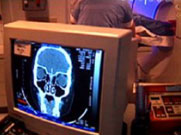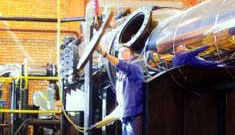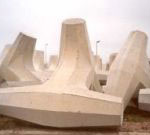| |
|
 |
|
 |
- South Africa is bidding to host the ambitious Square Kilometre Array (SKA) radio telescope that will have multiple receiving surfaces and will provide radio astronomers with one million m2 of collecting area. The Northern Cape is an ideal location for the SKA’s core array.
- In June 2003, Denel was contracted on behalf of Boeing to provide critical mission assistance during the launch of the Mars Exploration Rover.
- The South African Large Telescope (SALT), being built at Sutherland in the Northern Cape, is a multimillion-Rand project involving Germany, Poland, the USA, New Zealand and the UK. It will be the largest single optical telescope in the southern hemisphere. SALT will be able to focus sharply on an object the size of a two Rand coin 10 km away.
- SunSat 1 (Stellenbosch University SATellite) micro satellite was South Africa's first satellite to reach orbit, and operated successfully from February 1999 to January 2001.
- South Africans developed the technology of using micro-organisms like bacteria to extract gold from ore. The process is used worldwide for a wide variety of other metals as well.
- Sasol was the world's first petroleum-from-coal refinery and provides 40% of South Africa's petrol. The company now competes globally in the energy industry.
- Prof. Chris Barnard led the team that carried out the world's first heart transplant at Groote Schuur Hospital in 1967.
- South African orthodontists chair the dentistry departments at the universities of Buffalo (New York); Alabama (Birmingham, USA); and Manitoba (Canada)
- The computed axial tomography scan, or CAT scan, combining the use of X-rays with computer technology , was developed by South African physicist Allan Cormack and Godfrey Hounsfield of EMI Laboratories. Their achievement secured them the 1979 Nobel Prize in Physiology or Medicine.
- Dr Debbie Glencross, whose cheaper CD4 test measures in the immunity of Aids patients, has received world-wide recognition for her innovation which, is more accurate than previous tests and has cut costs by more than a third.
- South Africa had the 5th highest number of physicians in the world per 100 000 people.
- South Africa's traditional healers have been found by pharmaceutical companies to be a fount of information on medicinal plants. In the pipeline are cures for cancer and obesity, using South African plants and knowledge.
- South Africa is rated third in the world in supplying safe, drinkable tap water.
|
 |
 |
 |
 |
The computed axial tomography scan, or CAT scan, combin ing the use of X-rays with computer technology , was developed by South African physicist Allan Cormack and Godfrey Hounsfield of EMI Laboratories. Their achievement secured them the 1979 Nobel Prize in Physiology or Medicine.
(Photo:South Africa Info) |
North West University engineers inspect a working model of the turbine section of the Pebble Bed Modular Reactor. This micro turbine model, a collaboration between the university and PBMR, is the first closed-cycle, multi-shaft gas turbine system in the world
(Photo:Department of Science and Technology) |
The Kreepy Krauly automatic pool cleaner, now world-famous, was invented in South Africa in 1974 by hydraulics engineer, Ferdi Chauvier.
(Photo:South Africa Info) |
Dolosse - unusually shaped concrete blocks - weighing up to 20 tons and more - that are used all over the world to protect coastal installations from the action of the waves - were designed in South Africa by Eric Merrifield .
(Photo:South Africa Info) |
| |
|
















